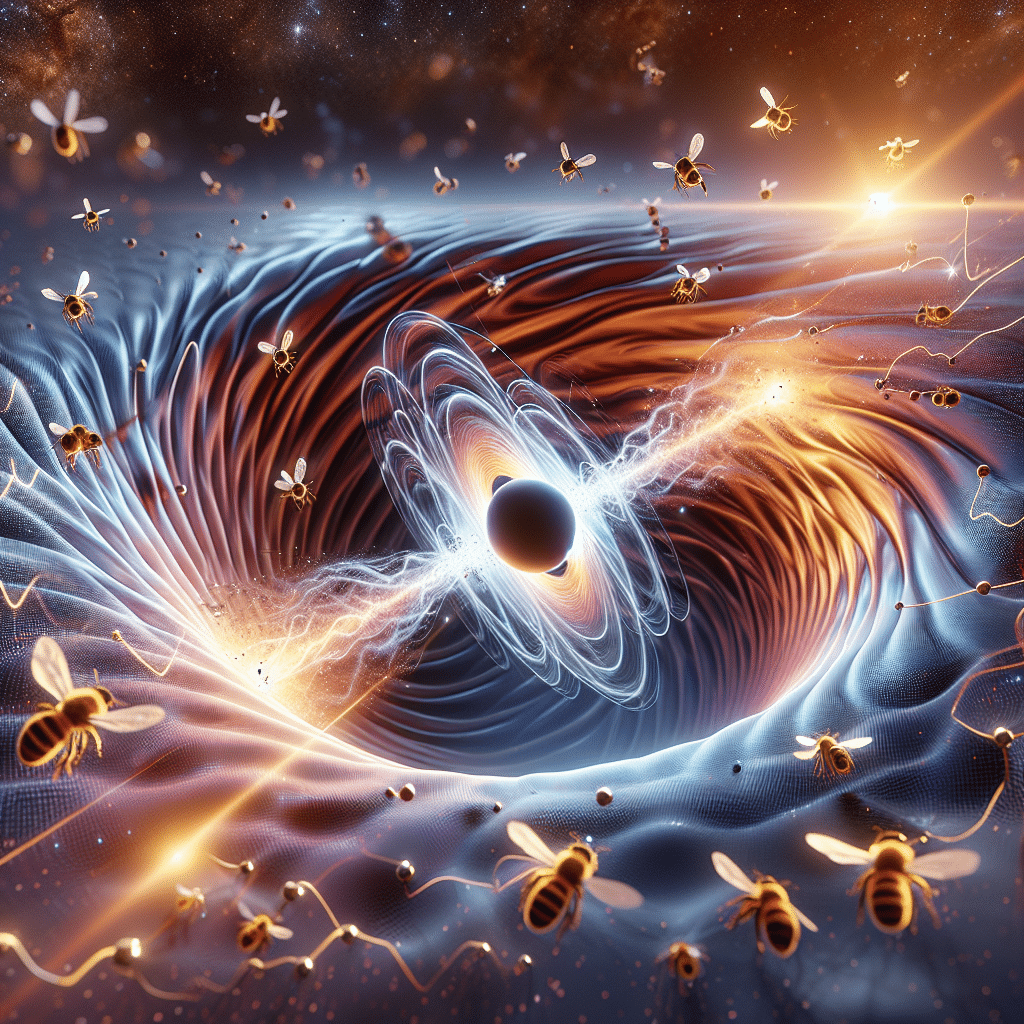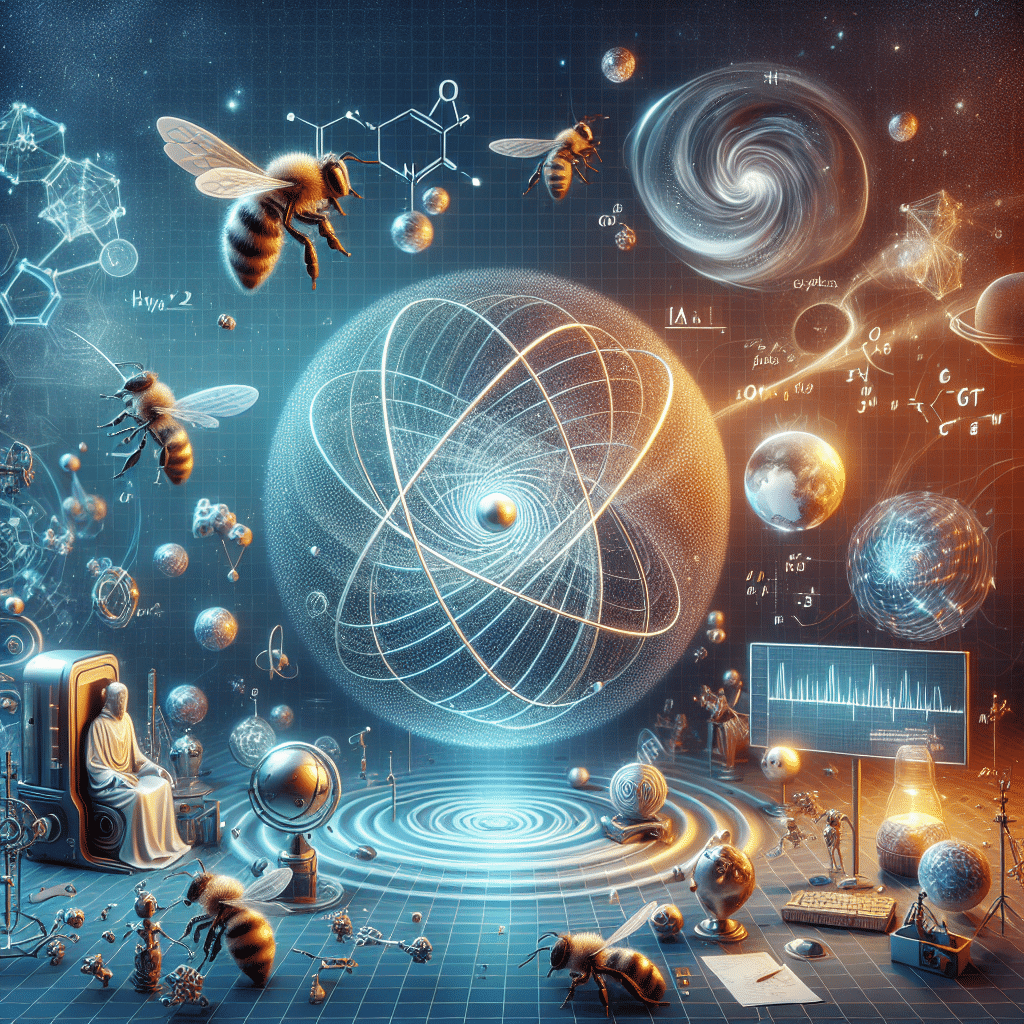Bee Theory: Wave-Based Gravity Model
Bee Theory proposes a wave-based model of gravity. Instead of treating gravity as a fundamental force or as a manifestation of spacetime curvature alone, it views it as an emergent property of oscillatory fields. According to this framework, the universe is permeated by fundamental oscillations, and what we perceive as gravitational attraction arises from the interference and resonance of these waves.
This perspective not only aligns with the experimental predictions of classical and relativistic gravity but also introduces a deeper connection between quantum mechanics, wave dynamics, and spacetime itself. In doing so, Bee Theory provides a pathway to unify disparate views of physics into a coherent, oscillatory paradigm.

Definition and Principles
At its core, Bee Theory is built on three key principles:
- Gravity as Emergence from Waves
- Gravity is not mediated by a particle (like the graviton) nor solely the result of curved geometry.
- Instead, it is the collective interference pattern of underlying oscillations in spacetime.
- These oscillations act similarly to standing waves in acoustics or optics, producing regions of constructive and destructive interference that manifest as attractive or repulsive gravitational effects.
- Wave Interference as a Universal Mechanism
- Interference explains not only the strength of gravitational attraction but also its universality.
- Since all matter and energy are embedded in the same oscillatory field, every object participates in the same resonance network.
- Spacetime as a Vibrational Medium
- Instead of treating spacetime as a passive background, Bee Theory regards it as an active, oscillating medium.
- The vibrations of this medium generate both the geometry we associate with Einstein’s relativity and the probabilistic behaviors observed in quantum systems.
Advantage over existing models:
- Entropic gravity explains gravity statistically, but lacks a physical substrate.
- Graviton-based models propose a mediator particle that has never been observed.
- Bee Theory combines the strengths of both: it provides a physical wave substrate for gravity that is consistent with entropy-driven emergence, while eliminating the need for hypothetical particles.
Comparison with Newton and Einstein
Newtonian Gravity
- Newton described gravity as a force acting instantaneously at a distance, proportional to the masses involved and inversely proportional to the square of the distance between them.
- This model successfully explained planetary motion and terrestrial phenomena but offered no explanation for how the force was transmitted.
Einstein’s General Relativity
- Einstein redefined gravity as the curvature of spacetime caused by mass and energy.
- Objects follow geodesics within this curved geometry, which explains phenomena like gravitational lensing, time dilation, and the precession of Mercury’s orbit.
- General relativity is highly successful, but it is fundamentally geometric, not quantum.
Bee Theory’s Oscillatory Perspective

- Bee Theory integrates the wave nature of spacetime into the discussion.
- Gravity arises not simply from curvature but from oscillatory resonance patterns embedded within spacetime itself.
- This means:
- At large scales, Bee Theory can replicate Einstein’s predictions of curvature and geodesics.
- At microscopic scales, it naturally connects to quantum oscillatory behavior, offering a framework for quantum gravity without invoking hypothetical gravitons.
Unique Contribution:
By framing gravity as oscillatory, Bee Theory removes the conceptual gap between geometry (relativity) and quantization (quantum mechanics). This may resolve inconsistencies that arise when trying to merge the two.
Bee Theory proposes a wave-based model of gravity. Instead of treating gravity as a fundamental force or as a manifestation of spacetime curvature alone, it views it as an emergent property of oscillatory fields. According to this framework, the universe is permeated by fundamental oscillations, and what we perceive as gravitational attraction arises from the interference and resonance of these waves.
This perspective not only aligns with the experimental predictions of classical and relativistic gravity but also introduces a deeper connection between quantum mechanics, wave dynamics, and spacetime itself. In doing so, Bee Theory provides a pathway to unify disparate views of physics into a coherent, oscillatory paradigm.
Potential Applications
1. Understanding Black Holes
- Traditional relativity describes black holes as singularities, where curvature becomes infinite and physical laws break down.
- Bee Theory suggests that singularities may be artifacts of ignoring the oscillatory substructure of spacetime.
- At extreme densities, interference effects could regulate or smooth out singularities, preventing true infinities.
- This could offer a new description of event horizons, Hawking radiation, and the ultimate fate of matter inside black holes.
2. Antigravity Predictions
- If gravity is an oscillatory field, then it should be possible to manipulate it through interference control.
- Just as sound waves can be cancelled through destructive interference, localized configurations of spacetime oscillations could theoretically produce repulsive gravitational effects.
- This opens the door to:
- Propulsion technologies not based on reaction mass.
- Shielding effects against gravitational pull.
- Applications in advanced aerospace and energy systems.
3. Rethinking Vacuum Energy
- Quantum field theory predicts an enormous vacuum energy density, yet cosmological observations suggest a much smaller value (the cosmological constant problem).
- Bee Theory offers an alternative:
- The oscillations of spacetime might act as a self-regulating system, where interference cancels most vacuum contributions.
- This mechanism could provide a natural explanation for dark energy and the accelerated expansion of the universe.
4. Pathway to Unification
- A wave-based framework inherently ties together:
- General relativity (geometry as large-scale oscillation patterns).
- Quantum mechanics (probabilistic oscillations at microscopic scales).
- Thermodynamics (entropy as a statistical result of wave interference).
- This makes Bee Theory a promising candidate for the long-sought unified theory of physics.



Bee Theory reframes gravity as a wave-based phenomenon, challenging the particle-centric and purely geometric views of the past. By treating spacetime as a vibrational medium, it provides a framework capable of:
- Replicating Newtonian and Einsteinian predictions at classical and relativistic levels.
- Extending naturally into the quantum regime without requiring unobserved particles.
- Offering testable predictions about black holes, antigravity, and vacuum energy.
In this sense, Bee Theory is not only a reinterpretation of gravity but a potential bridge between the fundamental domains of physics, opening pathways for both theoretical understanding and technological innovation.
